Some model series are brand-building for car manufacturers. What the 911 is to Porsche, the DS to Citroën, the 140/240 series is to Volvo. It established the international reputation for high safety with almost absolute indestructibility for the brand. "Safety from Swedish steel" manifested the reputation of building cars for eternity. The 140/240 model series was also built for an eternity, lasting more than 25 years - similar to the 911 - even though its successor, the 740, had already been on the market for more than 10 years. A variety of body versions, from the mundane estate to the exclusive coupé by Bertone, rounded off the range. Thanks to successful outings in touring car races, the model series was able to further consolidate its cult status.
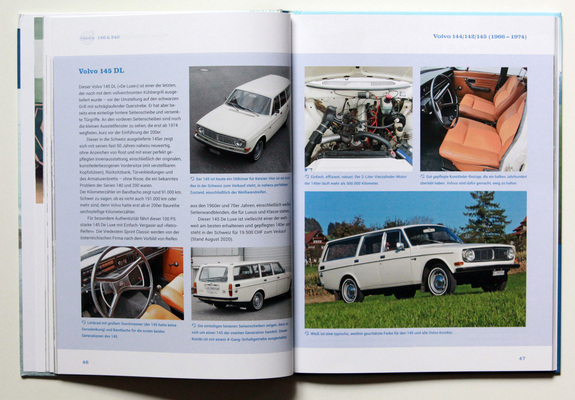
Volvo flourishes at
The Italian automotive journalist Alessandro Rigatto, himself the proud owner of a rare 245 DL estate car for the Northern European markets from 1979, devotes his book to the angular models in all their forms: as two- or four-door cars, estates, coupés and even racing touring cars. In this 150-page monograph, he presents Volo's no-frills mid-range models from the 1970s and 1980s, which matured into classics during their production period and became sought-after used cars. The Volvo 140 and 240 also ensured a high level of international brand awareness and an enormous image boost thanks to the model's outstanding features.
Volvo the brand for individualists
Humpback Volvo and Amazon had already cemented the brand's reputation for individualists, but it was the successor series 140 presented in 1966, eight years later - renamed 240 after a major facelift - that was to help Volvo achieve its breakthrough. Quality, safety and comfort scored points right from the launch of the 140. And Volvo ensured that these advantages were constantly improved through consistent model maintenance.
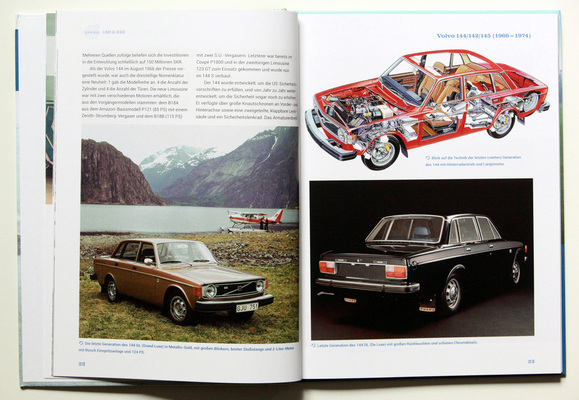
With the introduction of the 240 series, which unabashedly focused on safety, Volvo had consistently incorporated many aspects of the safety debates of the time into its vehicles and also consolidated its reputation in the USA. The 6-cylinder models were now even represented in the upper middle class and became a rational alternative to Mercedes and the smaller Jaguar models. In addition, the Volvos were cheaper, more reliable and, above all, much more robust than the majority of the competition.
The estate cars - especially the 240 series - also formed a species of their own: they became status symbols both in the USA and in Europe. Long before Mercedes brought the T-series onto the market, a family and leisure car had been created that offered space and comfort instead of a sober workhorse attitude. The estate in particular acquired a loyal clientele on the market, which is also reflected in the long production period, during which other manufacturers changed models up to four times.
The entire spectrum of model history
The book traces the history of the model series in 18 sub-chapters. It begins with an introduction and the origins of the 140 as the successor to the PV 444 and 544 as well as the Amazon P 121, 122 and 221 series. It then breaks down the 140 series into several chapters with the various models and the two facelifts and concludes with a bow to the magnificent 164 and 164 E Volvos with 6-cylinder engines, which were actually intended to be launched as 8-cylinder models.
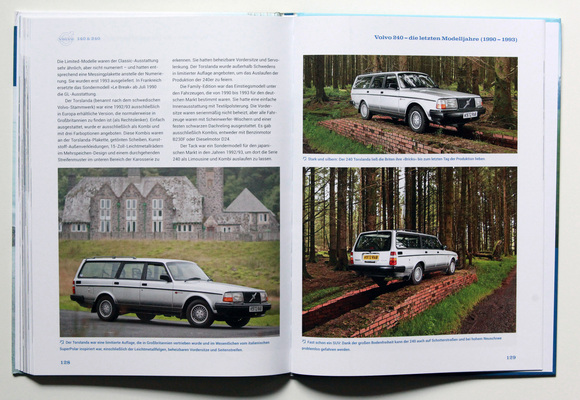
Almost halfway through the book, the author introduces the 200 series. Here he devotes many more sub-chapters to the special derivatives: Diesel, transfer, ambulance, mortician as well as the sporty GT and turbo models are presented individually. Of course, the exclusive 6-cylinder models and the coupés created by and at Bertone are also included here. Finally, the last model years of the 240 estate and the success story of the two-door 240 saloons in touring car racing in the 1980s, which earned the name "Flying Bricks", are presented.
With attention to detail
The author Riagotto's detailed knowledge is evident in the book. Not a single page is without background information on the model or brand history. There is always a sentence with additional facts, in which, for example, the 164 development is supplemented by the intention of the 8-cylinder development. It is these countless details that, with good readability of the text, enable in-depth access to the Volvo classic and probably also reveal one or two secrets to connoisseurs of the brand and the model.
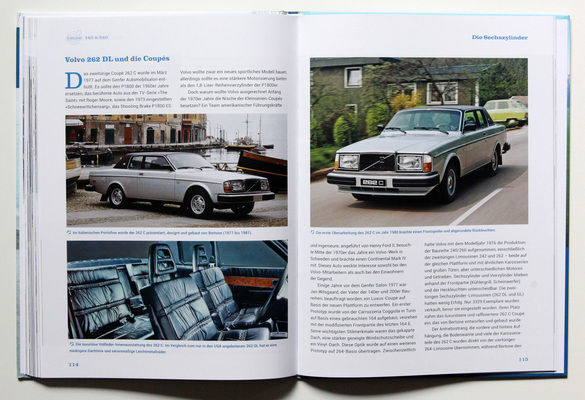
The book even includes three red models of the 240 turbo, 262 C and 780 Coupé series that were customized for Volvo boss Peer Gyllenhammer. Both market-specific special models based on the estate as well as limited edition models for the British, Japanese or Italian markets, for example, deserve a special mention and are included in the sales targets of Volvo or the importers. The fact that the author sometimes loses a few critical words is evidence of sufficient distance from the subject, despite all the enthusiasm for the vehicles.
Motorsport: Volvo marketing
Even if Volvo does not necessarily stand for absolute sportiness, the 240 was a successful motorsport instrument in the 1980s and won the European Touring Car Championship ETC in 1985. The 1.5 bar turbocharged engine delivered a stable 350 hp to the rear axle and battled it out with sports cars such as the BMW 635 CSi. Poor aerodynamics and a lack of maneuverability compensated for the acceleration of the high-torque turbo engine and the driver's willingness to heave the flying brick around the track with as little negative energy as possible. Once on the move, the car was difficult to slow down again. This can also be read in detail in the interviews with the drivers of the time. After Volvo withdrew from factory participation in motorsport with the victory of the ETC, the cars enjoyed a few more years of success in private hands until 1988.
The book no brick
Admittedly, I was a little taken aback at first, only just under 150 pages for over 20 years of model history, but after reading it I had to be taught better. Author Alessandro Rigatto has brought the complex and quite convoluted model history of the diverse successful series to the point. Written in a comprehensible manner, always following the model chronology, the reader learns a great deal of knowledge from an experienced author in an in-depth and readable way. Countless anecdotes liven up the story and give a good impression of the company's intentions, market conditions and the circumstances of the time. The book, published by Motorbuch, is based on the publisher's familiar, somewhat sober design.
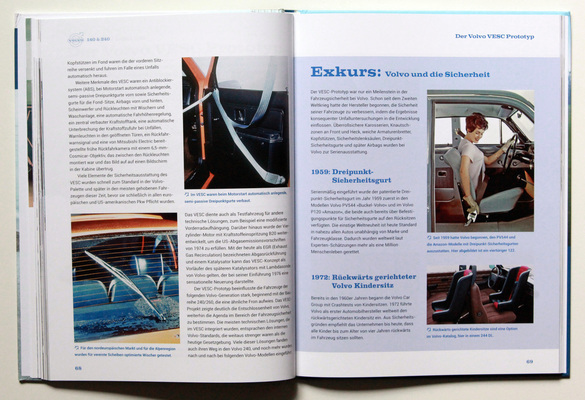
Numerous illustrations from the Volvo archive, some of which have never before been published in German-speaking countries, round off the information. Sometimes, however, one might wish that the pictures were less randomly placed and more in line with the flow of the text. Nevertheless, fans of the distinctive Volvo model series and those who want to become fans will definitely find this volume a well-made read and source of information, especially when it comes to special models, rare vehicles or other markets such as the USA, UK or Japan.
The only question that remains is whether the author could have revealed much more and produced a much more comprehensive work? This would then have been a real brick, but would not be sold for €19.95.
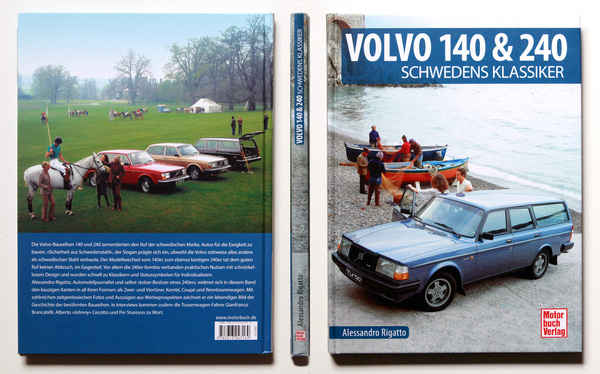
Bibliographic information
- Title: Volvo 140 & 240 Swedish classics
- Author: Alessandro Rigatto
- Language: German
- Publisher: Motorbuch
- 1st edition September 2020
- Format: 280 x 210 x 15 mm, hardcover
- Scope: 144 pages, 200 pictures
- ISBN: 978-3-613-04316-9
- Price: EUR 19,95
- Buy/Order: Online at amazon.de, online at Motorbuch-Verlag or in a well-assorted bookstore






















